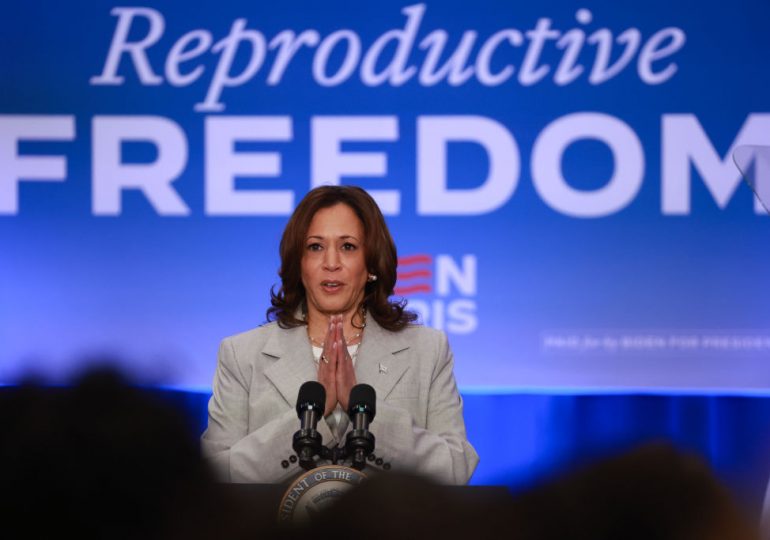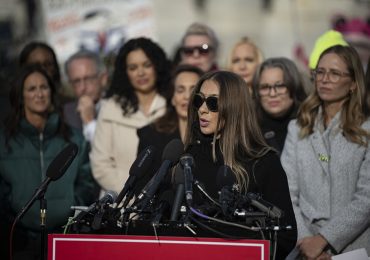Before rising to the top of the 2024 Democratic presidential ticket, Vice President Kamala Harris championed safe, legal access to abortion. On the campaign trail she has promised that if Congress passes legislation restoring reproductive freedoms, as President she would sign it into law. Recent reports show that restrictions on abortion implemented since the Supreme Court overturned Roe v. Wade jeopardize women’s lives and have led to a rise in infant deaths.
[time-brightcove not-tgx=”true”]
This is especially significant for African American women, who are poised to suffer the worst outcomes of six-week abortion bans in places like Texas, since Black women account for an estimated 40% of those seeking to end pregnancies. That statistic reflects a web of interconnected factors such as poverty, lack of access to quality health care, and high maternal mortality rates. Plus, history shows that in the absence of choice and contraception, Black women have gone to painful and often harrowing lengths to be self-determining.
Prior to the passage of the 13th Amendment ending slavery, enslaved Black women were literally property and denied control over their reproductive systems. Enslaved women were often raped and forced to “breed” because their progeny amplified enslavers’ wealth. Further, the children they conceived of their own volition, birthed, loved, and cared for could be sold for a profit or to repay enslavers’ debts, never mind being subject to the quotidian brutality that enslavement itself entailed.
Read More: Reproductive Rights Are Taking Center Stage at the DNC
Against this backdrop, enslaved women found ways to end pregnancies, sometimes using herbs to induce menstruation, or they committed infanticide. Some hoped to spare children from the horrors of slavery. Others took a different view of the matter. For example, Letty, an enslaved woman, was indicted for crushing the skull of her newborn in Virginia in 1822. She told investigators, “If the child had been one of her own colour, she would not have done as she did.” Letty’s extreme act and her sentiments gesture toward the trauma of interracial rape that marked so many enslaved women’s lives, and the refusal by some women to mother infants stemming from it.
After Emancipation, Black women set about reclaiming and redefining their womanhood. The restoration of virtue and bodily sanctity were of paramount importance, and many felt that having a child out of wedlock would threaten those aims. Single mothers faced dire financial implications as well as harsh judgments by the broader society.
Even families with two parents struggled and often could not afford another mouth to feed. Most Black families relied upon the income of several working family members—mothers and fathers and daughters and sons able to secure employment did so and usually contributed to the household. But even with multiple revenue streams, poverty was grinding.
Moreover, the post-Emancipation period brought its own set of cruel ironies for Black women. While enslavement was outlawed, in a practical sense rape and sexual abuse were not, because the law failed to protect Black victims. African American women remained particularly vulnerable to sexual assault as domestics working in white people’s homes and would have faced degrading stigmas from any pregnancies resulting from those assaults, in addition to the distressing circumstances.
We don’t have statistics for how many Black women sought to terminate such pregnancies over a century ago. But it’s clear that women used a variety of tactics to do so, demonstrating their desperation and their fury at the unfair restrictions over their lives. Some went to root doctors who prescribed herbal abortifacients, an unreliable solution since the elixirs could be toxic to women, frequently fatally so. Others went to underground abortionists who performed procedures that at the time, could be quite dangerous and deadly. Newspapers from the time were littered with accounts of women and girls who died from “criminal malpractice,” frequently a euphemism for botched medical abortions. Some women bled out quickly, while others suffered as they died from painful infections.
Read More: Rape Led to 64,000 Pregnancies in 14 U.S. States With Abortion Bans, Study Says
Given the great risks of available abortion options, some women decided to conceal their pregnancies, carry to term, and kill the infants after birth, as Henrietta Thompson did in Philadelphia in 1887. Impoverished, pregnant, and unwed, she gave birth and, according to court records and newspaper accounts, placed the infant in a cesspool. Upon discovery of her actions, she explained to police officers that she had to “go out and work for a living and could not afford to pay its board.”
Other women abandoned newborns at centers colloquially referred to as “baby farms.” At best, these operated as infant care centers for working mothers. On the other end, however, some proprietors subjected the children in their care to neglect that could lead to malnutrition, illness, and even death.
Mattie Burke, a Black woman operator of a notorious baby farm in Philadelphia in 1914, was charged with causing the deaths of three infants in her care. Pictures of their emaciated corpses were shown in court. Even as the mothers were distraught, one of the women defended Burke. For some, she and similar practitioners performed what was considered a necessary evil. So, while papers decried the squalid conditions in which the infants were kept and the fact that a single tin of condensed milk was shared among the children in Burke’s care for a week, new mothers continued to patronize such haunts with newborns in tow.
Read More: How American Women Could Lose the Right to Birth Control
Women pressed for legal access to safe and effective birth control and, in 1960, the Food and Drug Administration approved the first oral contraception. Five years later with Griswold v. Connecticut, the Supreme Court protected the right to use contraceptives. In 1973, the Supreme Court upheld abortion rights. The decades after the passage of Roe v. Wade were not without flaws, but access to abortion paired with the advent of widely available birth control afforded Black women and girls greater avenues to avoid conceiving before they were ready to parent and safely end unwanted pregnancies if they did. These allowed them to be the stewards of their own reproductive systems.
But with the Dobbs decision overturning Roe, and with more than a dozen states banning abortion completely or severely limiting access, those gains are vulnerable. Today, a lack of access to abortion doesn’t just imperil Black women’s health, it also leaves them at greater risk of criminalization—as we saw in Ohio in 2023, for example, where a Black woman named Brittany Watts who had a miscarriage was arrested on charges of having abused a corpse. (The charge against her was ultimately dismissed.)
It would be easy to leave histories like Letty’s, Henrietta Thompson’s and Mattie Burke’s in the past, but their legacies demonstrate something essential. Denying women choice does not prevent them from terminating pregnancies. Rather it compels those with few options to take dangerous risks to exercise reproductive rights. That might seem like hyperbole, but recent research suggests that only a fraction of rape and incest victims in states with bans have access to safe, legal abortions—even when those same states claim to have exceptions for these scenarios. No women and girls should have to face such horrors in America in the 21st century.
Kali Nicole Gross is the National Endowment for the Humanities Professor of African American Studies at Emory University and author of Vengeance Feminism: The Power of Black Women’s Fury in Lawless Times (Seal Press, 2024). Follow her on Threads @kalinicolegross.
Made by History takes readers beyond the headlines with articles written and edited by professional historians. Learn more about Made by History at TIME here. Opinions expressed do not necessarily reflect the views of TIME editors.
Leave a comment








